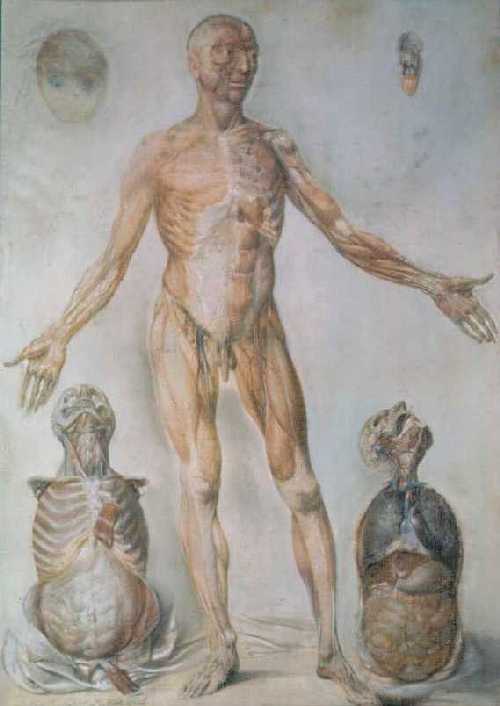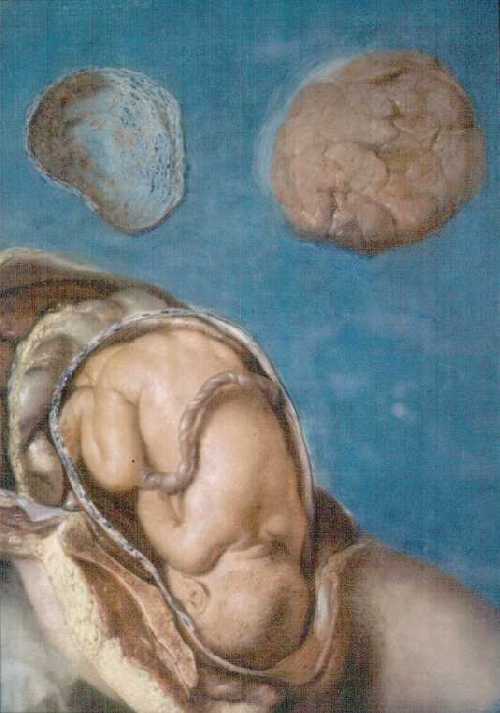

I just learned of a very exciting art/medicine exhibition opening on December 1st at the Pennsylvania Hospital's medical library in Philadelphia, PA. The show, entitled "From Pastels to PDA's: Medical Education from the 18th C. to the 21st C.," will features 16 original Jan Van Rymsdyk anatomical drawings that reside in the permanent collection of their historic collection but are almost never shown, due to their extremely fragile nature. These exquisite crayon drawings were created in the late 18th Century, and their provenance traces back to the personal collection of Benjamin Franklin, who founded Pennsylvania Hospital in 1751. The artist Jan Van Rymsdyk is best known for his sensitive and ground-breaking illustrations 18th Century surgeon William Hunter's Anatomia uteri humani gravidi, or The Anatomy of the Human Gravid Uterus; you can see the best known of those illustrations by clicking here.
The exhibition will be on view until January 2010. This show looks seriously not-to-be-missed.
Here is the full description of the exhibition, from the library website:
From Pastels to PDA's: Medical Education from the 18th c. to the 21st c. exhibits our collection of sixteen Jan Van Rymsdyk anatomical drawings for the first time together in one display. Opening to the public on December 1, 2009, this exhibition is sure to engage visitors interested in the history of medicine.You can find out more about the exhibition, and how to visit it, by clicking here. You can read more about the show--and much more about the history of the collection--by clicking here.
Long before the use of the X-ray, CAT scan, ultrasound and digital technology, the use of images played an important role in the medical education of students. Anatomical illustrations were cutting edge in the eighteenth century, and Jan Van Rymsdyk was known as one of the best anatomical illustrators in the world. Van Rymsdyk has kept his stature over the past two and a half centuries.
These illustrations were created with crayon making them very susceptible to damage, however, they survived a trip across the ocean in 1762 to become a center of the medical education young men received. In a letter dated April 7, 1762, Fothergill stated, “I need not tell thee that the knowledge of anatomy is of exceeding great use to Practionors in Physic and Surgery & that the means of procuring Subjects with you are not easy.” Medical education was about to change forever in Philadelphia.
Fothergill further offered his opinion that the drawings “not to be seen by every Person but with the Permission of a Trustee & for some small Gratuity for the Benefitt of the House.” Heeding Dr. Fothergill's warning, the drawings were viewed on a limited basis and carefully housed to protect them. Today, as 247 years ago, the drawings are viewed on a limited basis making this exhibit a rare treat for the public. The exhibition will run until December 2010.
For more information please call 215-829-5434.
All images from the Museum Website; Captions: Top: Jan van Rymsdyk (fl. 1750-1788) created the oil drawing shown here, which is part of the Pennsylvania Hospital Historic Collections.; Bottom: Jan van Rymsdyk (fl. 1750-1788) was the primary illustrator for William Hunter's noted work, Anatomia uteri humani gravidi, or The Anatomy of the Human Gravid Uterus. The oil drawing shown here is part of the Pennsylvania Hospital Historic Collections.


1 comment:
The images on display for the exhibition are high quality reproductions. Unfortunately, we could not keep the originals on display for an entire year.
The exhibit is amazing to see nonetheless and we certainly hope people will come out to view the images as well as the rare books on display in the historic library.
Thanks,
Stacey Peeples
Curator-Lead Archivist
Pennsylvania Hospital
Post a Comment